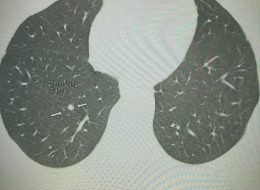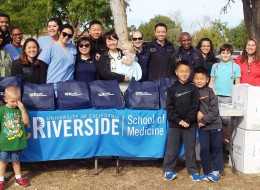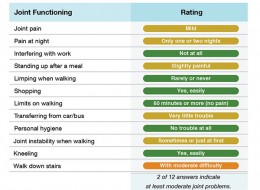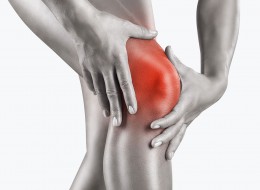Usually, my goal in writing on various subjects in Desert Health® is to mentor, teach, and provide support. This article on loss is coming from a unique perspective, more of a personal view, since my mother passed away April 15 of this year. As I walk through the steps of grief and loss, my hope… Read more »
Medical News
Scar-less Skin Cancer Removal
- By Mark Vincent Sofonio, MD
- May/June 2016
Skin cancers, including basal cell cancers and squamous cell cancers, are the most common cancers in the United States, affecting more than 4 million Americans every year. Skin cancers are over two times more common than all other cancers combined. They are also increasing faster than all other cancers combined. Every 10 seconds an American… Read more »
Why is The Flint Water Crisis So Important?
- By Brian Fiani, DO
- May/June 2016
In April 2014, the city of Flint, Michigan changed its water source from the Detroit Water and Sewerage Department to the Flint River. The decision was politically controversial and debated from the onset. Problems with the change stemmed from the fact that the Flint River water was not chemically treated with corrosion control measures. Therefore,… Read more »
Are Whitening Drops Bad for Your Eyes?
- By Greg Evans, OD
- May/June 2016
The short answer is “maybe.” To understand why, we need first to understand why one would use an eye whitener; other conditions it could mask or complicate; and how long it has been used. Eye drops are often prescribed to treat multiple eye conditions such as glaucoma, allergies, infections, dry eye, and inflammatory eye conditions… Read more »
An Option to Medications for BPH
- By Lance Patrick Walsh, MD, Ph.D.
- May/June 2016
Having to go all the time? You are not alone. Over 70% of men in their 60s have symptoms of BPH (benign prostatic hyperplasia),1 a condition in which the prostate enlarges as men get older. While BPH is a benign (non-cancerous) condition, it can certainly decrease one’s quality of life. The most common treatment for… Read more »
I Have Cancer, but My X-ray Is Normal
- By Stuart May, MD
- May/June 2016
It was August 2014 when Bob, age 49, developed a cough that did not resolve with the usual over-the-counter medications. He visited his family physician who ordered a chest x-ray. The chest x-ray report was normal. However, the cough persisted over the next 2 to 3 months so his physician decided to order a CAT… Read more »
Despite the name it’s had since being incorporated as a nonprofit organization in 1984, Desert AIDS Project in Palm Springs expanded its service purview beyond HIV care when it became a Federally Qualified Health Center (FQHC) “Look-Alike” in April 2012. But that doesn’t mean D.A.P. is any less concerned with HIV/AIDS than it has been… Read more »
The Palm Desert High School Health Careers Academy junior class participated in a job shadow day on March 16. Three vans transported 43 students to 20 medical-related locations including JFK Memorial Hospital, Eisenhower Medical Center, medical clinics, dental offices, senior centers, JW Marriot Desert Springs Resort & Spa, and even animal care facilities. The students… Read more »
“I Need a Drink!”
- By Pam Salvadore with medical review by Shannon Sinsheimer, ND
- May/June 2016
So many things change as women age. Our bodies, our minds, our purpose, all appear to go through a major transition between the ages of forty-five and sixty. Perhaps the biggest of the female changes is that of menopause, the end of a woman’s reproductive ability. Currently, the average age for menopause is fifty-one. During peri-menopause,… Read more »
Before you go saying, “Why would I ever listen to my good-for-nothing son?” let me start by clarifying that this title and the article to follow only apply to food and health. News and discoveries on the food/health connection are progressing so profoundly that even medicine is starting to consider the cause and effect. Yes,… Read more »
Street Medicine Comes to the Valley
- By Lauren Del Sarto
- March/April 2016
When caring physicians, nurses and health care professionals place medical supplies in a back pack and hit the streets to serve the homeless population, it is referred to as “street medicine,” and communities throughout the world are experiencing the benefits. There has been much talk about starting a street medicine program in the Coachella Valley… Read more »
Treatment Options for BPH
- By Lance Patrick Walsh, MD, Ph.D
- March/April 2016
Benign prostatic hyperplasia, or BPH, is a very common condition in which the prostate enlarges as men get older. Over 70% of men in their 60s have symptoms of BPH which affect more than 500 million men worldwide!1 While BPH is a benign (non-cancerous) condition, it can cause loss of productivity and sleep, depression and… Read more »
JFK Introduces Self-Assessment Health Profilers
- By Lauren Del Sarto
- March/April 2016
Ever wonder if that achy knee is something to worry about? Or how your numbers add up for heart health? Now you can get free advice without a trip to the doctors through science-backed questionnaires available on the JFK Memorial Hospital website. When I first heard about these new self-service health profilers, I thought they… Read more »
According to the National Institute of Mental Health, major depressive disorder impacts roughly 1 in 6 Americans at some point in their lifetime and is now a leading cause of disability as well as one of the factors impacting the growing incidence of suicide. The costs associated with major depression are estimated to be $210… Read more »
Allograft: Safe and Remarkable Applications for the Eye
- By Greg Evans, OD
- March/April 2016
An allograft is a bone or tissue surgically transplanted from one human donor to another, which may sound frightening, but is actually safe and has been in use for quite some time. The most common tissues are amniotic tissues which are attained only during childbirth. The tissues are processed and preserved to maintain viability from… Read more »
“Doc, I Need a Cortisone Shot”
- By Stuart T. May, MD
- March/April 2016
Dr. Jones, a busy local surgeon, presented with a six-week history of knee pain, which was not improved with aspirin and non-steroidal anti-inflammatory medication. A knee MRI showed moderate to severe osteoarthritis without a definitive surgical indication. Dr. Jones was offered an image-guided cortisone injection directly into the knee joint, and 48 hours after the… Read more »
Well Woman Visits in the U.S.
- By S. Ava Mahapatra, MD
- March/April 2016
Health care in United States is very costly. According to the Organization for Economic Cooperation and Development (OECD), the U.S. spent 17.1% of its Gross Domestic Products (GDP) on health care in 2013. A report published by Common Wealth Fund last year states that the U.S. spends most of its money on medical technology, procedures… Read more »
Give a Fresh Start to Your Personal Life
- By Susan Murphy, Ph.D.
- January/February 2016
“Life is 5 % what happens to you and 95% what you do with that.” Although life doesn’t come with a re-set button, you can give your personal life a fresh start anytime you choose. Why not declare that “2016 is going to be a fresh start”? I believe that what we do every day… Read more »
There are many things you need to do before going on a trip. You need to know what you will be doing, how long you’re going to be there, how you will get there, where you will be staying, and when you will be coming home. Getting ready for joint surgery is like that –… Read more »
Low Back Pain? The Spine is a Complex System
- By Shahin Etebar, MD
- January/February 2016
Low back pain is a significant health issue and one of the most common reasons for a doctor’s visit. Over 80% of the population has experienced at least one memorable episode of significant back pain in their lifetime, and it is the leading cause of disability and days lost from work. The spine is a… Read more »











